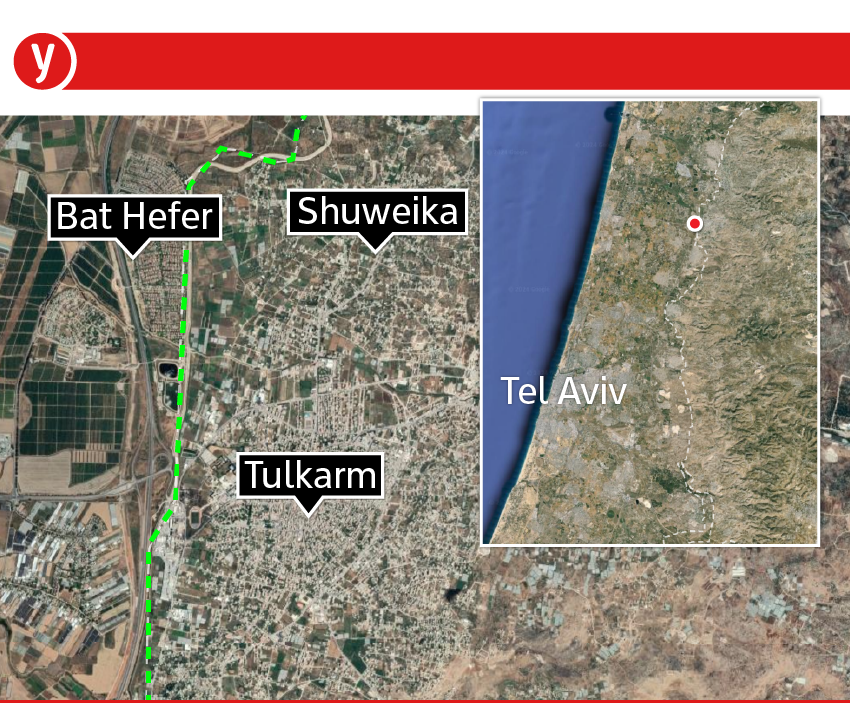Getting your Trinity Audio player ready...
Hear shots fired at Gan Ner
Shots were fired from the West Bank toward the nearby Israeli town of Gan Ner in the Gilboa regional council on Wednesday' It is the third time this month that the town in northern Israel has come under fire, and it occurred hours after communities further along the border in central Israel came under fire.
"This is directly tied to the efforts to carry out an attack, like the October 7 massacre," regional council head Danny Atar said. "It is a test of our reactions. Miraculously, no one was hurt."
Residents of Bat Hefer, a village adjacent to the border wall separating Israel from the West Bank, just east of Netanya, also were targeted by terrorists in the Tulkarm area after repeated attacks in recent weeks.
"There are just 300 meters (380 yards) of fields separating our homes from the homes of suburban Tulkarm," Moran Alon, spokesperson for Bat Hefer said, adding that, although the IDF is operating in the city often, the area is vast so by the time troops arrive the terrorists are long gone. "Things were quiet here until the war," he said.
3 View gallery


Palestinian man seen climbing over the border wall from the West Bank
(Photo: Screenshot)
On Monday, a clip that appeared on social media showed a group of Palestinians climbing over the border wall into Israel. They were detained by security forces and were found to be unarmed and only trying to find work. Still the effect of the images was chilling and showed how easily the barrier could be breached.
Palestinians climb over border wall into Israel
Bat Hefer is the largest community in the area, with 5,000 residents and plans to double in size, but residents said that more and more homes were now being put up for sale. The neighboring towns and agricultural communities share the fear that an attack could be made.
"I hear friends talking about the children suffering from anxiety. We hear gunfire and explosions and IDF aircraft overhead, day and night," he said. "We are only 15 km. (under 10 miles) from the coast. It's only a 15-minute drive to Netanya. This should concern every Israeli including those driving on the highway along the border wall."
3 View gallery


Hamas terrorists shooting from the West Bank at an Israeli community
(Photo: Screenshot)
After the shooting in the morning hours on Wednesday, Hamas released a video showing the attackers, identifiable by Hamas headbands, driving toward the separation barrier, exiting their car with weapons, approaching the fence and opening fire.
Hamas terrorists open fire on Israeli communities
When attacks were documented from areas like Nablus or Jenin toward nearby Israeli settlements, Hamas compensated the terrorists with payments ranging from several hundred to 1,500 shekels ($400). The aim of the terrorist organization is not only to target Israeli settlements but also to send a message and disseminate it through video footage.






